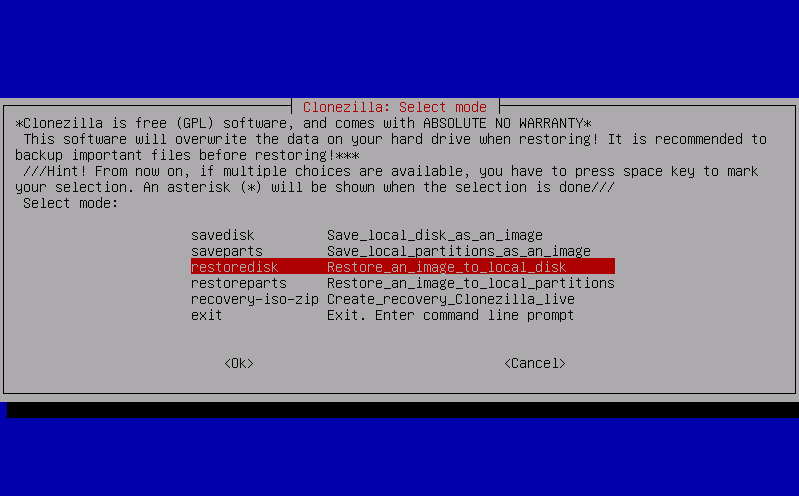Backup and Recovery Using a System Image
Introduction
The integrity of the Medical Record is of paramount importance to a practice. The Electronic Medical Record is effectively ephemeral unless the physician takes step to preserve it in more than one format. The user has the built-in utility to backup but if the emr_backup.tar fails to restore, one is left high and dry.
Creation of a system image provides another layer of redundancy. It is inefficient to clone a hard drive if a great deal of it is empty space. It can take well over 24 hours to clone a hard drive.
Another use of a system image is to smite a particularly stubborn piece of malware that persists despite all previous efforts. Testing code changes can precipitate white screens of death. If a solution is nowhere to be found, restoring a system image is better than taking 10 grains of Acetylsalicylic Acid.
Clonezilla
Clonezilla is open source, but the instructions are not very easy and the Graphical User Interface is a bit frumpy.
